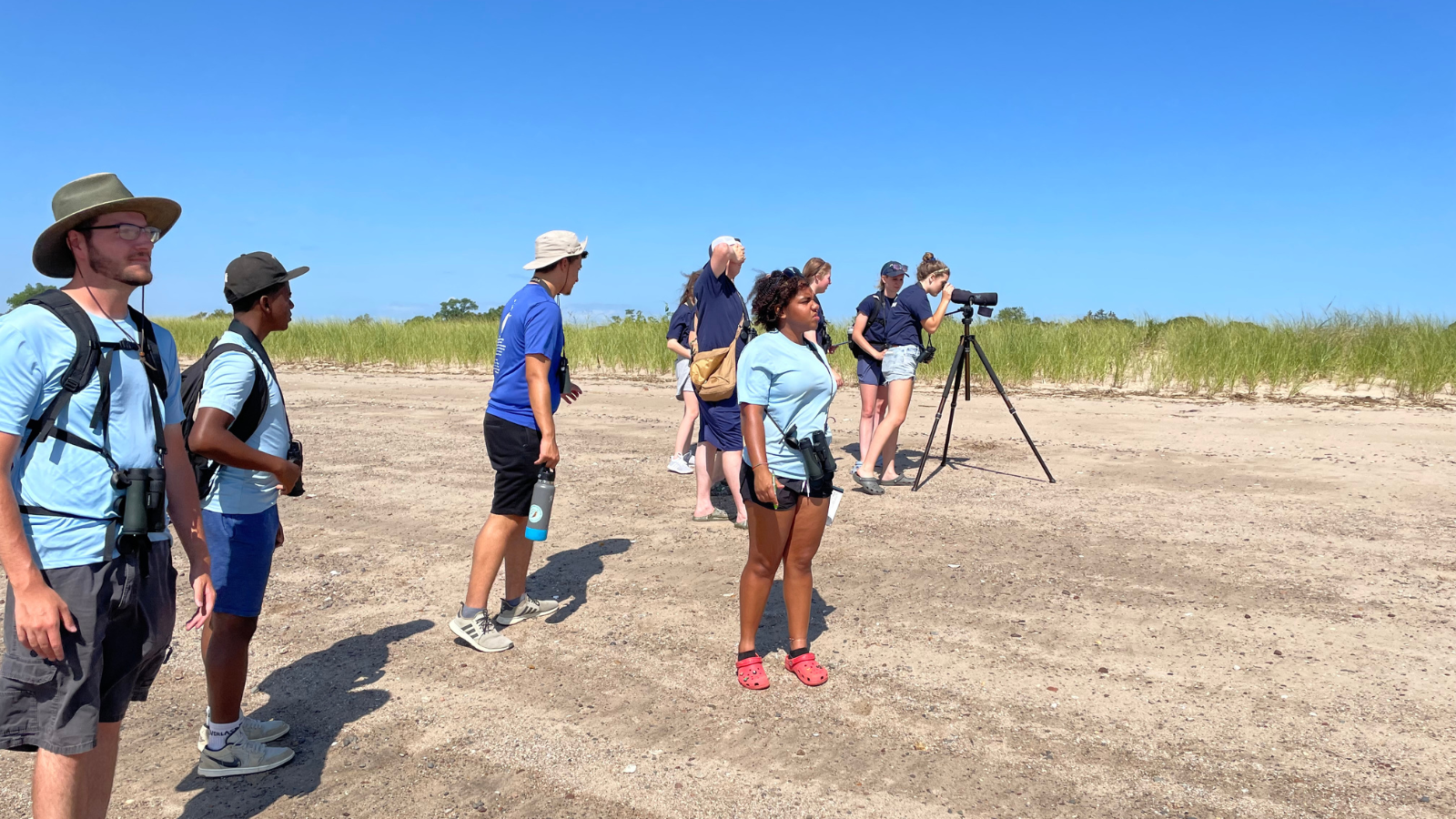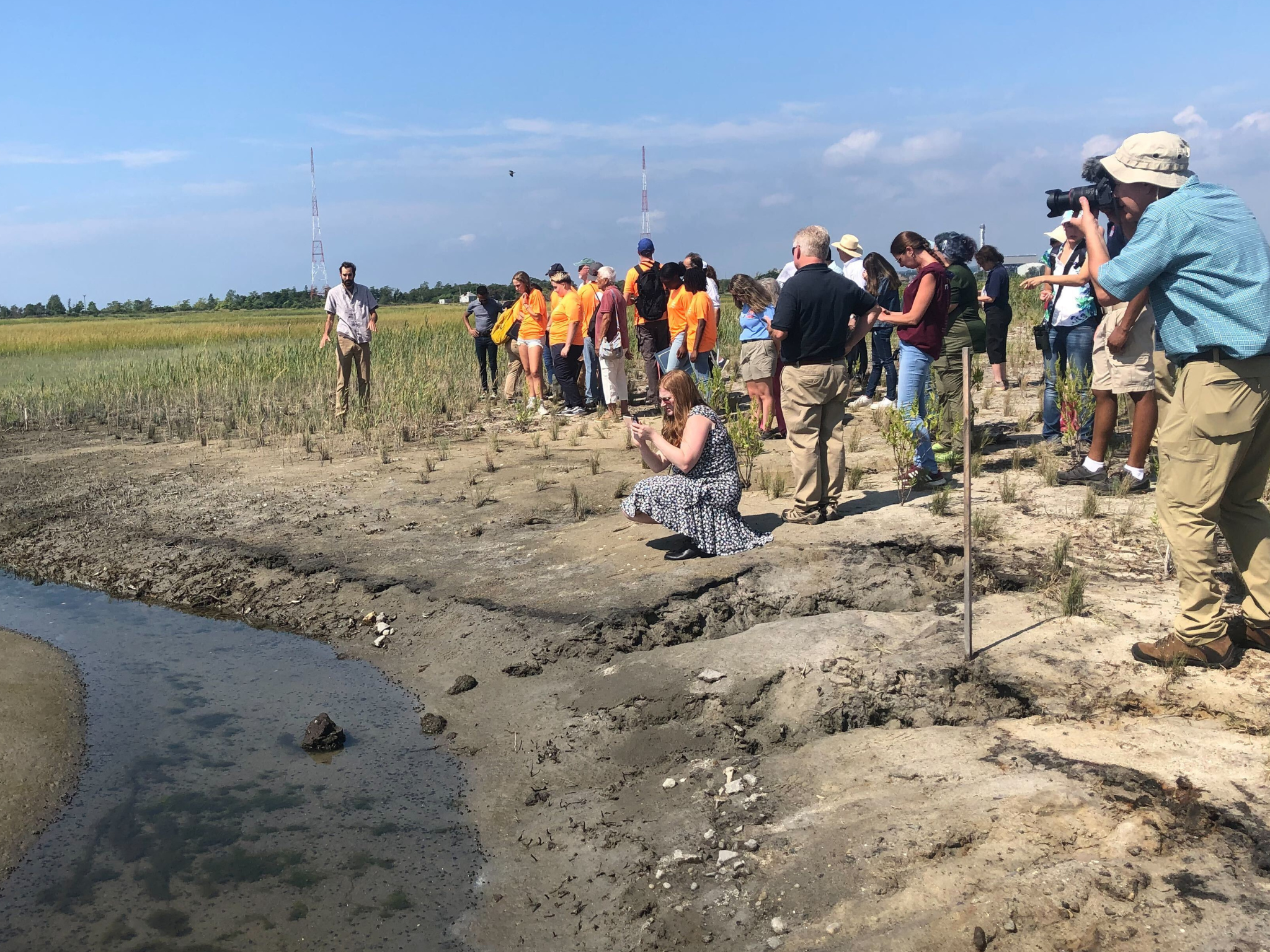On the Wing
For threatened and endangered species, every fledged chick is a success and a sign that our hard work is worth it. All three of our focal species—Piping Plovers, American Oystercatchers, and Least Terns—had excellent nesting seasons in 2022!
In total, we monitored 66 pairs of Piping Plovers during the 2022 season. These pairs produced 97 total fledglings, adding up to a productivity of 1.51 fledglings per pair. Compared to the 2021 nesting season, this year we had more pairs, more fledged chicks, and a higher productivity—all sure signs that the population is growing!
American Oystercatchers also had a successful breeding season, with 79 confirmed breeding pairs out of a population of 200 individuals—an increase of 28% over the last decade. These pairs successfully fledged 62 chicks, amounting to a productivity of 0.78 fledglings per pair. This is higher than the 0.5 fledglings per pair recovery goal for this species, and our highest number of fledged chicks since we started this work in 2012.
The 247 pairs of Least Terns we monitored fledged 211 chicks, adding up to a productivity of 0.85 fledglings per pair. This is the highest number of fledged least terns we’ve had in years, and significantly higher than the 0.11 productivity from the 2021 nesting season.
Bands for Birds
In addition to monitoring, we also continued our banding efforts with the American Oystercatcher. To date, we have banded 45 adults (making up 28% of Connecticut's breeding population) and 17 pre-fledge chicks. The bands allow us to learn all about where birds go, and when, so we can better understand their movements and what it will take to conserve these birds.
This year, we got a surprise visit from two birds we had banded in 2020 and hadn't sighted since—the first of the 17 chicks we've banded to be re-sighted returning to CT! You can help the American Oystercatcher banding project by reporting any sightings of banded oystercatchers to the American Oystercatcher Working Group.
People Power
For the first time since 2020, our volunteer numbers returned to their pre-Covid numbers. As a result of holding our annual training virtually, we were able to reach a record number of 173 volunteers this season. All of their hard work added up to an amazing 1,376 volunteer hours.
With the help of our volunteers, techs, interns, and WildLife Guards, we were able to set up string fencing, install exclosures, monitor our many pairs of nesting shorebirds, and spread the word on protecting beach-nesting birds by engaging with beachgoers, boaters, and other members of the public.
Partnerships with Connecticut’s environmental conservation officers and the Connecticut Dept. of Energy and Environmental Protection Boating Division also helped us expand our outreach capabilities.
“2022 was a very successful year for CT’s beach-nesting birds thanks to hundreds of volunteers, field staff, wildlife guards, municipalities, and partners,” explains Corrie Folsom-O’Keefe, Audubon CT’s Director of Bird Conservation. “We are so thankful for to everyone for their time and efforts protecting our birds and their habitats!”
Outreach on the Beach

In 2022, we also continued our participation in an project with Virginia Tech to identify ways to mitigate shorebird disturbance. While the project spans across several states that house nesting shorebirds, our work in Connecticut focused on specific actions people can take during three different tide stages to best share the shore with nesting and migratory shorebirds, like the Piping Plover.
Between creating new project-specific signage and brochures to engaging in weekly tabling events, we were able to reach close to 300 beachgoers and help make beaches a safer space for the birds we share them with!
The Future of Conservation

An integral part of this successful season were the WildLife Guards, a group of 16 high school students and their college-age Crew Leaders who spent the summer on the beaches, monitoring shorebirds and educating and engaging beachgoers on shorebird conservation.
This year marked the first year where the WildLife Guards took part in a pair of “swap” days with one of Audubon Connecticut’s other youth conservation groups, the Junior Forest Technicians (JFT) from Bent of the River Audubon Center. In addition to learning new skills of their own, they were able to show the JFTs what its like to be a WildLife Guard, including shorebird monitoring, shorebird identification, and outreach.
Significant Salt Marsh Restoration

Beaches are not the only habitat that Connecticut’s shorebirds focus on, nor are shorebirds the entire focus of our coastal conservation work. Another invaluable habitat is the salt marsh, essential habitat for birds like the declining Saltmarsh Sparrow.
Throughout the course of this year, Audubon Connecticut, in collaboration with the U.S. Fish and Wildlife Service, National Oceanic and Atmospheric Administration, the State of Connecticut, and the Town of Stratford, implemented the largest salt marsh restoration project in the state’s history at the Great Meadows Marsh in Stratford, CT.
Thanks to the hard work of our partners, Salt Marsh Stewards, crew leaders, and more than 150 volunteers, we were able to complete the first phases of the project and held a ribbon-cutting to celebrate this in August. We look forward to continuing the implementation of this restoration project and sharing progress as we do so!






